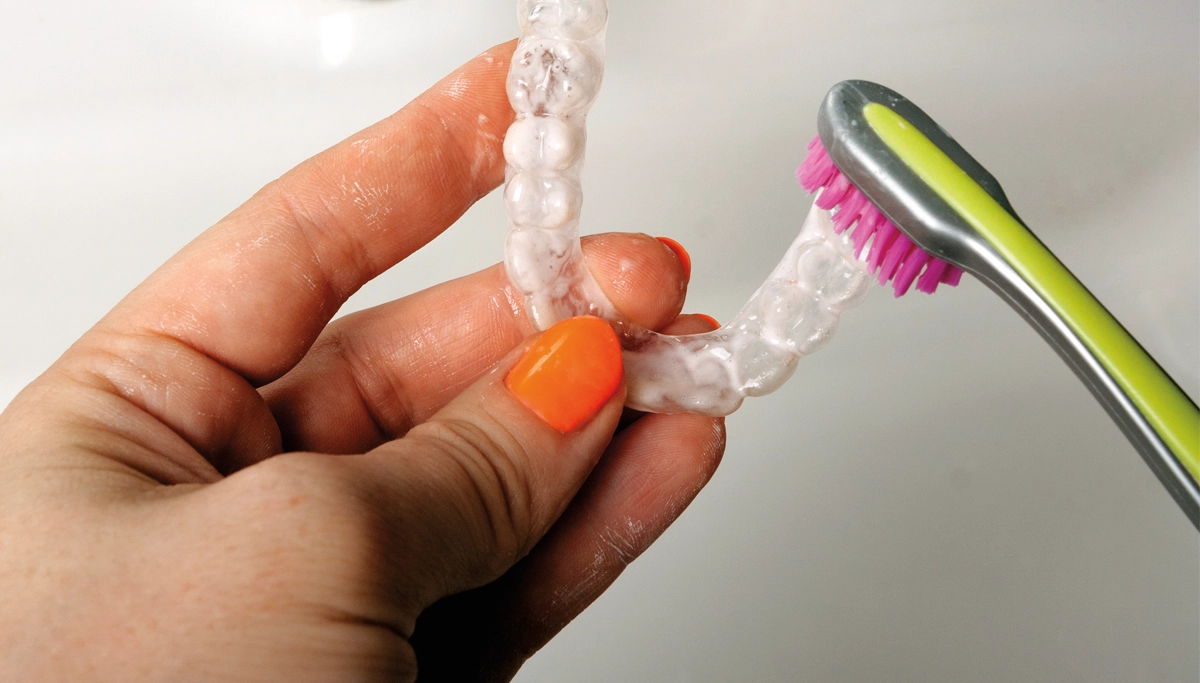Early detection is vital
Preventive practices: How to reduce your oral cancer risk
Oral cancer is a broad term for cancer found somewhere in your mouth — on your tongue, in your gums, on the roof or floor of your mouth, or in the back of your throat. It is the most common form of head and neck cancer and without treatment, it can spread to other areas of your body.
When it comes to fighting cancer, it is extremely important to diagnose the problem and begin treatment early. That’s another reason to prioritize your regularly scheduled dentist appointments — while you’re there, your dentist will check for signs of oral cancer!
Oral cancers are most common in people 40 years old or older.1
Signs and symptoms of oral cancer
It’s important to know the symptoms of oral cancer. That way you can check for them at home, monitor any issues, and visit your dentist, primary care provider, or a specialist if they persist.
Symptoms of oral cancer are wide-ranging and can include:
-

Unexpected weight loss
-

Swelling or pain in the jaw
-

A growth or lump in your mouth
-

Teeth that are loose for no reason
-

Persistent rough or crusted areas in your mouth
-

Trouble with chewing, swallowing, and speaking
-

Difficulty hearing, or pain and ringing in your ears
-

A white or reddish spot on your gums, tongue, tonsils, or mouth lining
-

Sores on your lips or mouth that bleed easily and last at least two weeks
-

Ongoing feelings of numbness, tenderness, or pain in your face, neck, or mouth
If you experience any of these issues and the problem lasts for at least two weeks, consult your physician or dentist to determine the cause and to plan treatment.
You can reduce your oral cancer risk
It’s not possible to completely eliminate all risk of oral cancer. For example, you can’t change your genetics or family’s medical history, which are factors that increase your potential for developing the disease.
However, you can greatly reduce your risk by making healthy decisions and lifestyle choices:
-

Prioritize your regular dentist visits, which will include an oral health screening
-

Eat a nutritious diet that includes fresh fruits and vegetables
-

Do not smoke or vape (or try to quit if you do)
-

Do not use chewing tobacco, dip, or other smokeless tobacco products
-

If you drink alcohol, do so infrequently and always follow the Center for Disease Prevention and Control (CDC) guidance on alcohol:
- Two drinks or less per day for men
- One drink per day for women
-

Get vaccinated for the human papillomavirus (HPV)
-

Protect your lips and skin when you are outdoors by using balm and sunscreen with SPF 15+
You can also help uncover any issues early with a self-screening at home. Once per month, check yourself for symptoms in front of the mirror:
-

Feel along your jawline and down the sides of your neck to check for swelling
-

Gently pull your lips away from your mouth so you can see your gums and the inside of your cheeks
- Look for red or white patches
- Feel along your inner cheeks to check for lesions or areas of tenderness
-

Stick out your tongue and look for any swelling or discoloration
-

Lift your tongue to check the floor of your mouth and bottom of your tongue
-

Tip your head back and look for sores or discoloration on the roof of your mouth
Live well and watch for warning signs
Make healthy choices to lower your chances for developing an oral cancer. You can also protect your health and watch for symptoms by going to your scheduled dentist appointments and performing regular self-screenings at home.






